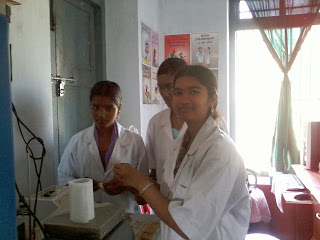Saturday, 28 December 2013
Monday, 16 December 2013
Students Project
on
Effect of different cooking methods on vegetable oxalate content.
Approximately
75% of all kidney stones are composed primarily of calcium oxalate, and
hyperoxaluria is a primary risk factor for this disorder. Nine types of
raw and cooked vegetables were analyzed for oxalate using an enzymatic
method. There was a high proportion of water-soluble oxalate in most of
the tested raw vegetables(spinach). Boiling markedly reduced soluble oxalate
content by 30-87% and was more effective than steaming (5-53%) and
baking (used only for potatoes, no oxalate loss). An assessment of the
oxalate content of cooking water used for boiling and steaming revealed
an approximately 100% recovery of oxalate losses. The losses of
insoluble oxalate during cooking varied greatly, ranging from 0 to 74%.
Because soluble sources of oxalate appear to be better absorbed than
insoluble sources, employing cooking methods that significantly reduce
soluble oxalate may be an effective strategy for decreasing oxaluria in
individuals predisposed to the development of kidney stones.
The Dissolved oxalates estimated by KMno4 Titration method:
#take 20ml of solution and 20ml con.sulfuric acid and heat the content.
#the content titrated with 2M KMno4 solution
#Boiling method Solution contains more oxalates which is determined by calculation of how much KmnO4 is required?
#Hence the Boiling solution require 27ml KMnO4.
#The steamed Solution require 20ml KMnO4.
#So that In boiling method more oxalates dissolved in water which is right process now.
#ancient method from our bharat.(clay pot cooking).
The Dissolved oxalates estimated by KMno4 Titration method:
#take 20ml of solution and 20ml con.sulfuric acid and heat the content.
#the content titrated with 2M KMno4 solution
#Boiling method Solution contains more oxalates which is determined by calculation of how much KmnO4 is required?
#Hence the Boiling solution require 27ml KMnO4.
#The steamed Solution require 20ml KMnO4.
#So that In boiling method more oxalates dissolved in water which is right process now.
#ancient method from our bharat.(clay pot cooking).
Subscribe to:
Posts (Atom)




















